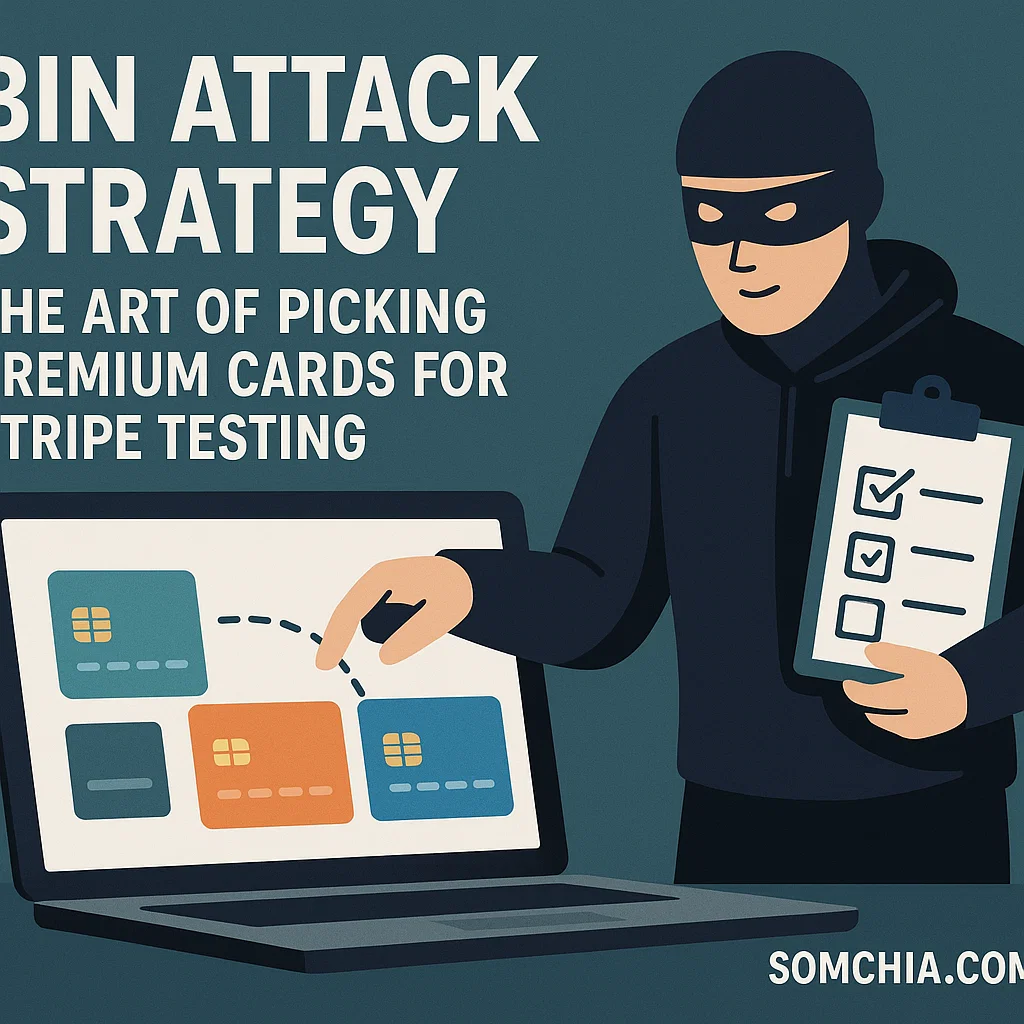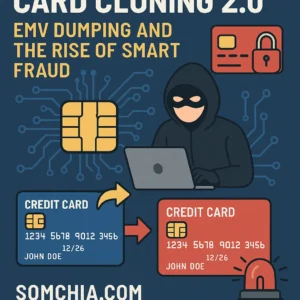Introduction
In the world of credit card fraud and card testing, BIN attacks have become one of the most commonly used and efficient tactics. Especially when targeting platforms like Stripe, knowing how to pick the right cards—and more specifically, the right BINs—can make or break a card testing operation.
In this guide, we’ll break down the BIN attack strategy, explain how Stripe card testing works, and reveal how fraudsters select premium BINs for higher success rates and bigger payouts.
Disclaimer: This article is for educational and cybersecurity research purposes only. We do not promote or encourage illegal activity.
What Is a BIN Attack?
A BIN attack (Bank Identification Number attack) is a type of brute-force card testing method where an attacker generates a large number of credit card numbers by exploiting a known BIN range. The attacker then tests these card numbers on payment gateways like Stripe, PayPal, or Square, looking for valid combinations.
BIN (Bank Identification Number) refers to the first 6 or 8 digits of a credit or debit card, which identify the issuing bank and card type.
Key Characteristics of BIN Attacks:
-
Automated tools generate hundreds or thousands of card numbers.
-
The attacker focuses on one BIN (e.g., 414720 for Chase Sapphire).
-
The process involves rapid testing to find working cards.
-
Often combined with bot scripts and residential proxies to avoid detection.
Why Stripe Is Targeted for BIN Attacks
Stripe.com is a developer-friendly payment processor, making it a prime target for fraudsters because of:
-
Fast integration with e-commerce sites
-
Weak implementation by novice developers
-
Lax default settings for CVV/AVS verification
Once a site is using Stripe without strict fraud detection, it’s vulnerable to card testing attacks, including BIN enumeration.
Stripe itself explains the issue in their official documentation on card testing attacks.
How Fraudsters Pick “Premium” BINs for Stripe Testing
Fraudsters don’t just use any BINs—they often select premium or high-limit card BINs for maximum payout and usability. Here’s how:
✅ Characteristics of a Premium BIN:
-
Issued by major banks (e.g., Chase, Amex, Citi)
-
Tied to Platinum, Signature, or World Elite cards
-
Higher approval rates on Stripe or Shopify
-
Less likely to trigger fraud filters when used carefully
️ Tools Used to Find Premium BINs:
-
Carder forums and Telegram groups sharing tested BINs
-
Combining BINs with live CVV2s or Fullz for higher success
Step-by-Step BIN Attack Strategy for Stripe Testing (For Research Purposes)
-
Find a High-Value BIN
-
Use BIN lookup tools to find premium card types.
-
Look for issuing banks with lax anti-fraud history.
-
Examples: 414720 (Chase Sapphire Preferred), 541275 (Citi AAdvantage)
-
-
Generate Card Numbers
-
Use tools like Bingenerator, MrChecker, or Python scripts.
-
Generate dozens to hundreds of variations with same BIN.
-
-
Test on a Vulnerable Stripe Integration
-
Look for small e-commerce shops with minimal fraud protection.
-
Test small transactions ($1 or less) to confirm card validity.
-
-
Use Residential Proxies
-
Services like Smartproxy, Proxyrack, or Soax help rotate IPs to avoid detection.
-
-
Record Live Cards
-
Once a working card is found, it’s often sold as a live CVV or used immediately for cardable purchases.
-
According to a 2024 report by Visa, card testing and BIN attacks are responsible for 20%+ of reported fraud activity on new e-commerce merchants.
Countermeasures: How to Protect Your Stripe Integration
Whether you’re a business owner or cybersecurity researcher, it’s important to know how to block these attacks:
-
✅ Enable AVS (Address Verification System)
-
✅ Require CVV2 checks
-
✅ Use Stripe Radar or Fraud Protection tools
-
✅ Monitor for unusual traffic patterns
-
✅ Block requests from known BIN ranges or high-risk countries
Related Terms: CVV Dumps, Fullz, and Card Dumps
If you’re exploring this topic, you’ve likely heard terms like:
-
CVV Dumps – Stolen card data with security code
-
Fullz Info – Full cardholder profiles (name, SSN, DOB, etc.)
-
Card Dumps – Magnetic stripe data used for cloning
You can read more in our in-depth post:
How to Buy Working CCs, CVV2, and Fullz Online (And What It Really Means)
Conclusion
BIN attack strategies remain a major threat to payment processors like Stripe. Understanding how fraudsters select and test premium BINs reveals a deeper layer of modern cybercrime operations. Whether you’re analyzing threat patterns or locking down your e-commerce stack, knowing the BIN attack methodology is a must in 2025.
Want to learn more? Explore Visa’s fraud mitigation resources and Stripe’s fraud prevention docs.




